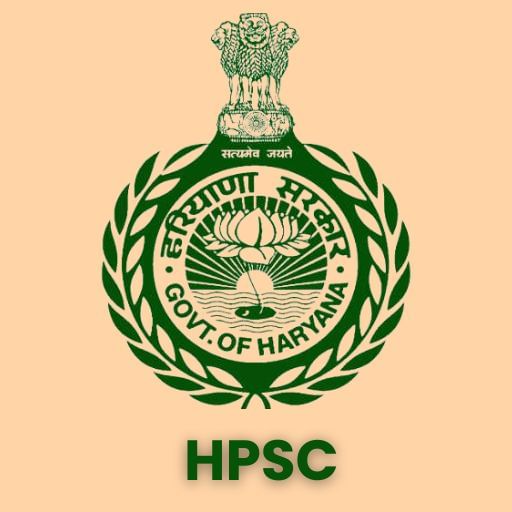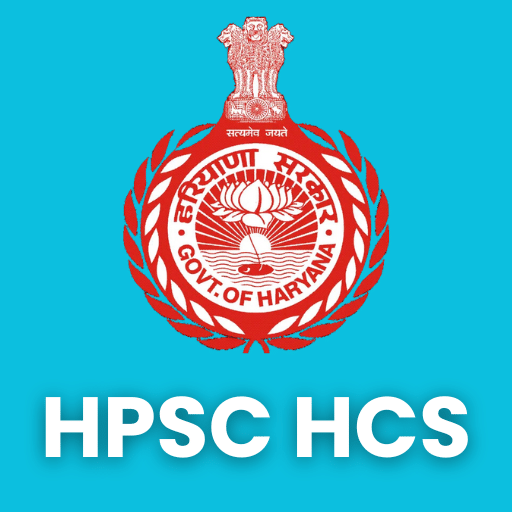Passage Based Questions: Globalisation - 1 | Political Science Class 12 - Humanities/Arts PDF Download
Q1: Read the Passage below and answer the questions that follow:
Globalisation refers to the growing interconnectedness between countries through the movement of ideas, capital, commodities, and people. It is a multi-dimensional process with economic, political, and cultural aspects. Globalisation has led to the expansion of trade, outsourcing of services, and cultural exchanges. However, it has also generated debates on economic inequality, cultural homogenisation, and state sovereignty.
i. Which of the following best defines globalisation? (1 mark)
(a) The movement of people alone
(b) The worldwide interconnectedness of ideas, capital, commodities, and people
(c) The expansion of military alliances
(d) The promotion of local industries only
ii. What are the three main dimensions of globalisation? (2 marks)
iii. Why do some people criticize globalisation? (1 mark)
Ans:
i. (b) The worldwide interconnectedness of ideas, capital, commodities, and people
ii.
- Economic globalisation, which involves trade, investment, and financial markets.
- Political globalisation, which affects state sovereignty and international institutions.
iii. It can lead to economic inequality and cultural homogenisation.
Q2: Read the Passage below and answer the questions that follow:
Globalisation has been driven by technological advancements, particularly in communication and transportation. The invention of the telephone, internet, and microchip has allowed ideas and capital to move across the world rapidly. The ease of international trade and economic liberalisation policies have also contributed to increasing global connections.
i. Which factor has played a key role in accelerating globalisation? (1 mark)
(a) Increased border restrictions
(b) Advances in technology
(c) Economic isolation policies
(d) Reduced foreign investments
ii. How has technology contributed to globalisation? (2 marks)
iii. Why is globalisation occurring at a faster rate today compared to the past? (1 mark)
Ans:
i. (b) Advances in technology
ii.
- The internet and digital economy have enabled faster global communication.
- Modern transportation has allowed goods and people to move efficiently across borders.
iii. The speed and scale of movement of capital, goods, and ideas have increased due to technology.
Q3: Read the Passage below and answer the questions that follow:
Economic globalisation has resulted in the growth of international trade, outsourcing of services, and foreign direct investments (FDI). Institutions like the World Trade Organization (WTO), International Monetary Fund (IMF), and World Bank influence economic policies worldwide. While globalisation has led to economic growth, critics argue that it increases income inequality and benefits only a few wealthy nations and corporations.
i. Which international institution regulates global trade? (1 mark)
(a) United Nations (UN)
(b) World Trade Organization (WTO)
(c) International Atomic Energy Agency (IAEA)
(d) Red Cross
ii. What are the positive and negative economic effects of globalisation? (2 marks)
iii. Why do critics argue that economic globalisation benefits only a few countries? (1 mark)
Ans:
i. (b) World Trade Organization (WTO)
ii.
- Positive: Increased trade, investment, and job opportunities.
- Negative: Rising economic inequality and loss of jobs in some sectors due to outsourcing.
iii. Wealthier countries and multinational corporations dominate trade and investment decisions.
Q4: Read the Passage below and answer the questions that follow:
Globalisation has influenced cultures worldwide, leading to both cultural homogenisation and cultural heterogenisation. Western culture, particularly American media and fashion, has spread globally, leading to concerns about the loss of local traditions. At the same time, cultures have also mixed, creating new hybrid identities. This debate over globalisation’s cultural impact remains unresolved.
i. What is cultural homogenisation? (1 mark)
(a) The mixing of different cultures
(b) The dominance of one culture over others
(c) The preservation of local traditions
(d) The restriction of cultural exchange
ii. How does globalisation influence culture? (2 marks)
iii. Why do some people fear cultural globalisation? (1 mark)
Ans:
i. (b) The dominance of one culture over others
ii.
- The spread of global brands and media, resulting in uniformity in fashion, music, and food.
- Facilitating cultural exchange, where local traditions can influence global culture.
iii. They believe it may erase local traditions and impose a dominant Western culture.
Q5: Read the Passage below and answer the questions that follow:
Globalisation has led to protests from different groups who oppose economic liberalisation, cultural changes, and the weakening of state sovereignty. In 1999, anti-globalisation activists protested at the World Trade Organization (WTO) meeting in Seattle, arguing that the system favors wealthy nations over developing countries. Similarly, in India, protests have emerged against foreign corporations, the impact on small businesses, and cultural influences such as Western media.
i. Which of the following events was a major anti-globalisation protest? (1 mark)
(a) The formation of the United Nations
(b) The 1999 Seattle WTO protests
(c) The signing of the Kyoto Protocol
(d) The expansion of NATO
ii. Why do some groups resist globalisation? (2 marks)
iii. How has India experienced resistance to globalisation? (1 mark)
Ans:
i. (b) The 1999 Seattle WTO protests
ii.
- Economic concerns: Globalisation tends to benefit large corporations while harming local businesses.
- Cultural concerns: It promotes Western culture, which can threaten local traditions.
iii. Protests against multinational corporations and foreign economic influence.
Q6: Read the Passage below and answer the questions that follow:
Globalisation has influenced the role of nation-states and their sovereignty. Some argue that it has led to an erosion of state capacity, as multinational corporations (MNCs) and international institutions now play a major role in economic and social policies. Many states have shifted from welfare-oriented policies to a market-driven approach. However, others argue that states still maintain control over law, order, and national security and that globalisation has strengthened state capacities through technological advancements in governance.
i. How has globalisation impacted the role of the state? (1 mark)
(a) It has completely eliminated state power
(b) It has weakened state sovereignty in economic policies
(c) It has made states more powerful in all aspects
(d) It has removed the need for national governments
ii. What are two contrasting views on globalisation’s impact on state power? (2 marks)
iii. Why do some argue that globalisation weakens the welfare state? (1 mark)
Ans:
i. (b) It has weakened state sovereignty in economic policies
ii.
- Some argue that globalisation reduces state control as MNCs and international institutions influence policies.
- Others claim that globalisation has strengthened states by providing better technology for governance.
iii. Governments are pressured to reduce public services and follow market-driven policies.
 |
Download the notes
Passage Based Questions: Globalisation - 1
|
Download as PDF |
Q7: Read the Passage below and answer the questions that follow:
One major feature of globalisation is the free flow of capital across countries. Many developing nations attract foreign direct investment (FDI) from multinational corporations, which helps in economic growth. However, the ease of capital movement has also led to financial instability, as seen in crises like the 1997 Asian financial crisis. Countries often face challenges in balancing economic openness with financial security.
i. What does the term ‘free flow of capital’ refer to? (1 mark)
(a) The movement of workers across borders
(b) The unrestricted movement of money and investments between countries
(c) The increase in global tourism
(d) The removal of border controls
ii. What are the benefits and risks of free capital movement? (2 marks)
iii. How did the 1997 Asian financial crisis highlight the risks of capital movement? (1 mark)
Ans:
i. (b) The unrestricted movement of money and investments between countries
ii.
- Benefits: Foreign direct investment (FDI) can significantly aid in economic development.
- Risks: Quick capital movement may trigger financial crises.
iii. Rapid withdrawal of foreign investments led to economic instability in many Asian countries.
Q8: Read the Passage below and answer the questions that follow:
Technology has played a crucial role in globalisation, particularly in digital communication and e-commerce. The rise of multinational technology companies like Google, Amazon, and Facebook has changed how people work, communicate, and shop. Digital platforms have enabled global outsourcing, creating jobs in countries like India. However, concerns remain over data privacy, digital monopolies, and cybersecurity threats.
i. Which sector has been most transformed by globalisation in the digital age? (1 mark)
(a) Agriculture
(b) E-commerce and digital services
(c) Heavy industries
(d) Traditional manufacturing
ii. How has digital globalisation impacted economies? (2 marks)
iii. Why are digital monopolies a concern in the global economy? (1 mark)
Ans:
i. (b) E-commerce and digital services
ii.
- They have created new job opportunities through outsourcing and online platforms.
- Concerns have arisen regarding data privacy and cybersecurity.
iii. A few large tech companies dominate the market, limiting competition.
Q9: Read the Passage below and answer the questions that follow:
While some fear that globalisation leads to cultural homogenisation, others argue that it also creates cultural heterogenisation. This means that global influences mix with local traditions, creating new cultural forms. For example, Indian food chains have adapted Western fast food with local flavors. Similarly, Western clothing styles have been blended with traditional outfits. This interaction between global and local cultures creates unique hybrid cultures.
i. What is cultural heterogenisation? (1 mark)
(a) The dominance of one culture over all others
(b) The blending of global and local cultures
(c) The complete rejection of foreign influences
(d) The loss of all traditional customs
ii. How does cultural heterogenisation manifest in daily life? (2 marks)
iii. Why do some argue that cultural globalisation is not always negative? (1 mark)
Ans:
i. (b) The blending of global and local cultures
ii.
- Blending of cultures: Global fast-food chains often adapt their menus to reflect local tastes.
- Hybrid fashion: Traditional clothing merges with Western styles, creating new fashion trends.
iii. It can create diversity by allowing local cultures to influence global trends.
Q10: Read the Passage below and answer the questions that follow:
Labour migration has been a key feature of globalisation, as people move across borders for better job opportunities. Countries with strong economies attract skilled and unskilled workers, leading to debates over immigration policies and economic impact. While migration provides benefits such as remittances and workforce diversity, it also raises concerns about job competition and cultural integration.
i. What is a major reason for labour migration in the globalised world? (1 mark)
(a) Political alliances
(b) Economic opportunities and better wages
(c) Military expansion
(d) Decrease in population
ii. What are the positive and negative effects of labour migration? (2 marks)
iii. Why do some countries impose restrictions on immigration? (1 mark)
Ans:
i. (b) Economic opportunities and better wages
ii.
- Positive impact: Migrants often send remittances back home, which helps boost local economies.
- Negative impact: Increased job competition can lead to tensions between migrants and local workers.
iii. They fear that foreign workers may take jobs from their local populations.
|
34 videos|278 docs|51 tests
|
FAQs on Passage Based Questions: Globalisation - 1 - Political Science Class 12 - Humanities/Arts
| 1. What is globalization and how does it impact culture? |  |
| 2. What are the positive effects of globalization on the arts? |  |
| 3. How does globalization affect local traditions and languages? |  |
| 4. In what ways can globalization contribute to economic inequality? |  |
| 5. How can individuals and communities respond to the challenges of globalization? |  |




















